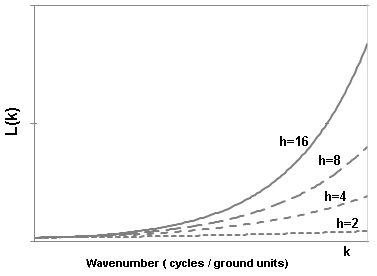Downward Continuation (CNDN)
Use the Downward Continuation option to apply a downward continuation filter.
Downward Continuation dialog options
|
Distance to downward continue |
The distance h in ground units, relative to the plane of observation, to downward continue. |
Application Notes
Downward continuation is used to enhance the responses from sources at a depth by effectively bringing the plane of measurement closer to the sources. Note that it is not theoretically possible to continue through a potential field source. Since short-wavelength signal can appear to be from shallow sources, it must be removed to prevent high amplitude and short wavelength noise in the processed data. To do this, you would usually apply some type of low-pass filter, such as the Butterworth filter and Optimum Wiener filter. A plot of the radially averaged energy spectrum would help you determine the wavenumber at which sources (noise) appears to be more shallow than the depth of continuation. The energy spectrum is also a good guide for determining the depth to which data can be downward continued.
Downward continuation
Where:
|
h |
Distance in ground units, relative to the plane of observation to continue down. |

Wavenumber domain variable definition
|
k |
Wavenumber domain increment, used to depict a radially symmetrical variable. |
where: np is the number of points cs is the cell size |
|
u |
X component in the wavenumber domain. | k = 2π ( i μ+j ν ) |
|
v |
Y component in the wavenumber domain. |
|
|
r |
Radial component in the wavenumber domain. |
|
|
θ |
Polar component in the wavenumber domain. |
|
Ground_unit is the survey ground units as defined in your grid (e.g. metre or feet). Ground units may be left undefined.
Got a question? Visit the Seequent forums or Seequent support
© 2024 Seequent, The Bentley Subsurface Company
Privacy | Terms of Use
